-
 Bitcoin
Bitcoin $120100
1.16% -
 Ethereum
Ethereum $4329
2.25% -
 XRP
XRP $3.192
-0.22% -
 Tether USDt
Tether USDt $1.000
-0.01% -
 BNB
BNB $805.2
0.47% -
 Solana
Solana $178.7
-1.85% -
 USDC
USDC $0.9998
0.00% -
 Dogecoin
Dogecoin $0.2305
-1.62% -
 TRON
TRON $0.3445
1.17% -
 Cardano
Cardano $0.7940
-1.28% -
 Hyperliquid
Hyperliquid $44.44
-1.20% -
 Chainlink
Chainlink $21.86
-2.42% -
 Stellar
Stellar $0.4423
-0.15% -
 Sui
Sui $3.728
-3.84% -
 Bitcoin Cash
Bitcoin Cash $584.8
2.19% -
 Hedera
Hedera $0.2524
-2.87% -
 Ethena USDe
Ethena USDe $1.001
-0.02% -
 Avalanche
Avalanche $23.66
-0.78% -
 Litecoin
Litecoin $124.5
0.39% -
 Toncoin
Toncoin $3.399
1.77% -
 UNUS SED LEO
UNUS SED LEO $9.002
-0.44% -
 Shiba Inu
Shiba Inu $0.00001327
-2.10% -
 Uniswap
Uniswap $11.42
2.58% -
 Polkadot
Polkadot $3.957
-2.50% -
 Cronos
Cronos $0.1696
4.50% -
 Dai
Dai $1.000
0.00% -
 Ethena
Ethena $0.8139
3.04% -
 Bitget Token
Bitget Token $4.442
-0.38% -
 Monero
Monero $271.2
2.93% -
 Pepe
Pepe $0.00001168
-2.91%
How to obtain USDT by participating in liquidity mining?
Earn USDT through liquidity mining by depositing paired tokens into a DEX's liquidity pool, but be aware of impermanent loss risks. Choose reputable DEXs, carefully select pools, and prioritize wallet security for optimal results.
Mar 12, 2025 at 10:15 am

Key Points:
- Liquidity mining rewards participants with USDT (and other tokens) for providing liquidity to decentralized exchanges (DEXs).
- The process involves depositing paired tokens into a liquidity pool.
- Impermanent loss is a significant risk; understanding this is crucial before participating.
- Choosing the right DEX and liquidity pool requires research into fees, risk, and token pairings.
- Security considerations, including using reputable platforms and securing your wallet, are paramount.
How to Obtain USDT by Participating in Liquidity Mining?
Liquidity mining is a popular way to earn passive income in the cryptocurrency space. It involves providing liquidity to decentralized exchanges (DEXs), which facilitates trading and earns you rewards, often including USDT. But understanding the process and associated risks is essential before diving in.
Understanding Liquidity Pools
DEXs operate using automated market makers (AMMs). These AMMs use liquidity pools, which are pools of cryptocurrency pairs (e.g., USDT/USDC, ETH/USDT). Liquidity providers (LPs) contribute to these pools, and in return, they earn trading fees generated from swaps within the pool. Many DEXs incentivize LPs further by distributing additional tokens, sometimes including USDT, as rewards.
Step-by-Step Guide to Liquidity Mining for USDT
- Choose a DEX: Research different DEXs like Uniswap, Curve, PancakeSwap, etc., comparing their fees, supported tokens, and security reputation. Each platform has its own interface and process.
- Select a Liquidity Pool: Identify a pool containing USDT. Consider the risk involved. Pools with volatile assets may offer higher rewards but also expose you to greater impermanent loss.
- Connect Your Wallet: Connect your compatible crypto wallet (e.g., MetaMask, Trust Wallet) to the chosen DEX. Ensure your wallet holds the required tokens for the chosen pool.
- Deposit Your Tokens: Provide an equal value of the paired tokens to the liquidity pool. For example, if you're adding to a USDT/USDC pool, you'll need an equal value of USDT and USDC.
- Claim Your Rewards: After a certain period, claim your earned trading fees and additional rewards (including USDT, if offered) from the liquidity pool. The frequency of claiming rewards varies depending on the DEX.
Impermanent Loss: A Crucial Consideration
Impermanent loss is a significant risk in liquidity mining. It occurs when the price of your deposited tokens changes relative to each other while they're in the pool. If the price ratio of your deposited tokens shifts significantly, you may receive less of the original assets when you withdraw than if you had simply held them. Understanding and calculating potential impermanent loss is crucial before committing your funds.
Choosing the Right DEX and Pool
Selecting the appropriate DEX and liquidity pool is paramount. Factors to consider include:
- Trading Fees: Higher trading volume generally translates to higher fees for liquidity providers.
- Token Pair Volatility: Highly volatile pairs can lead to significant impermanent loss.
- Rewards Structure: Examine the types and amounts of rewards offered (including USDT).
- DEX Security: Choose reputable and secure DEXs to minimize the risk of hacks or exploits.
Security Best Practices
- Use a reputable hardware wallet: This provides an extra layer of security for your crypto assets.
- Only use official DEX websites and apps: Avoid phishing sites and scams.
- Enable two-factor authentication (2FA) on your wallet and exchange accounts.
- Regularly audit your wallet and transactions.
- Diversify your liquidity provision across multiple pools and DEXs.
Common Questions and Answers:
Q: What are the risks of liquidity mining?
A: The primary risk is impermanent loss, where the value of your deposited assets changes relative to each other, resulting in a loss compared to simply holding them. Smart contract risks, security breaches of the DEX, and rug pulls are also potential concerns.
Q: How often can I withdraw my liquidity and rewards?
A: The frequency of withdrawal varies by DEX. Some allow daily withdrawals, while others have lock-up periods. Check the specific terms of the liquidity pool you're participating in.
Q: Are there any tax implications for liquidity mining rewards?
A: Yes, liquidity mining rewards are generally considered taxable income in most jurisdictions. Consult a tax professional for specific advice.
Q: Can I lose all my funds in liquidity mining?
A: While unlikely with reputable DEXs, there is a risk of loss. Impermanent loss, hacks, or exploits could lead to partial or total loss of funds. Thorough research and due diligence are essential.
Q: How do I calculate impermanent loss?
A: There are online calculators available that can help you estimate impermanent loss based on the initial price ratio and the current price ratio of the tokens in your pool.
Q: What is the difference between yield farming and liquidity mining?
A: While both generate passive income, yield farming typically involves lending or staking crypto assets to earn interest, whereas liquidity mining involves providing liquidity to DEXs. They often overlap.
Q: What if the DEX I'm using gets hacked?
A: This is a significant risk. Choose reputable and secure DEXs. However, even the most secure platforms are not immune to hacking. Using a hardware wallet and diversifying your investments can mitigate some of this risk.
Disclaimer:info@kdj.com
The information provided is not trading advice. kdj.com does not assume any responsibility for any investments made based on the information provided in this article. Cryptocurrencies are highly volatile and it is highly recommended that you invest with caution after thorough research!
If you believe that the content used on this website infringes your copyright, please contact us immediately (info@kdj.com) and we will delete it promptly.
- Bitcoin, Solana, MAGACOIN FINANCE: Navigating the 2025 Crypto Landscape
- 2025-08-12 00:30:13
- Cardano, ADA Holders, and Layer Brett: A Meme Coin with Real Utility?
- 2025-08-12 00:50:12
- Bitcoin, Michael Saylor, and Savvy Investors: A New Era of Digital Assets
- 2025-08-12 00:30:13
- Crypto Presales in 2025: Spotting the Next Big Thing with Analyst Insights
- 2025-08-12 00:50:12
- Cloud Mining in 2025: Bitcoin, Litecoin, and the Quest for Passive Income
- 2025-08-12 00:55:32
- Token Security, Agentic AI, Cybersecurity Guide: Navigating the New Frontier
- 2025-08-11 23:00:12
Related knowledge
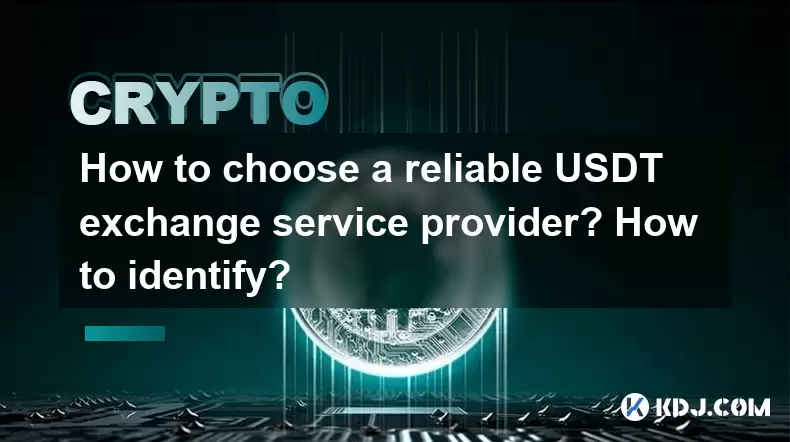
How to choose a reliable USDT exchange service provider? How to identify?
Jun 12,2025 at 03:15pm
Understanding the Role of USDT in Cryptocurrency TradingUSDT (Tether) is one of the most widely used stablecoins in the cryptocurrency market. It is d...
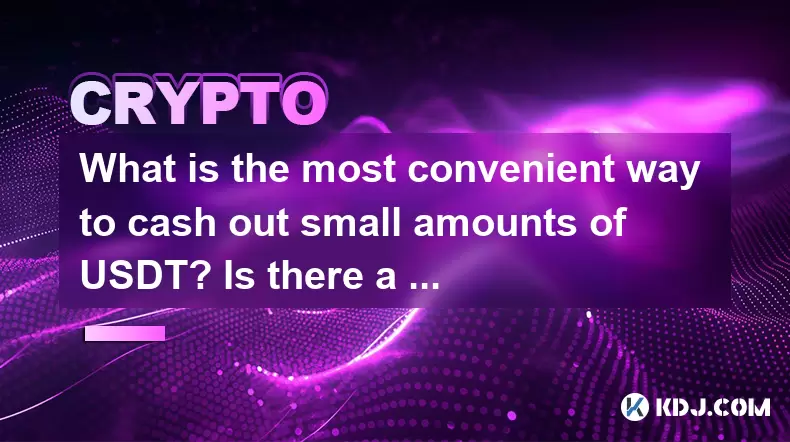
What is the most convenient way to cash out small amounts of USDT? Is there a shortcut?
Jun 11,2025 at 11:00pm
Understanding the Need to Cash Out Small USDT AmountsCashing out small amounts of USDT can be a challenge for many crypto users. Traditional methods o...
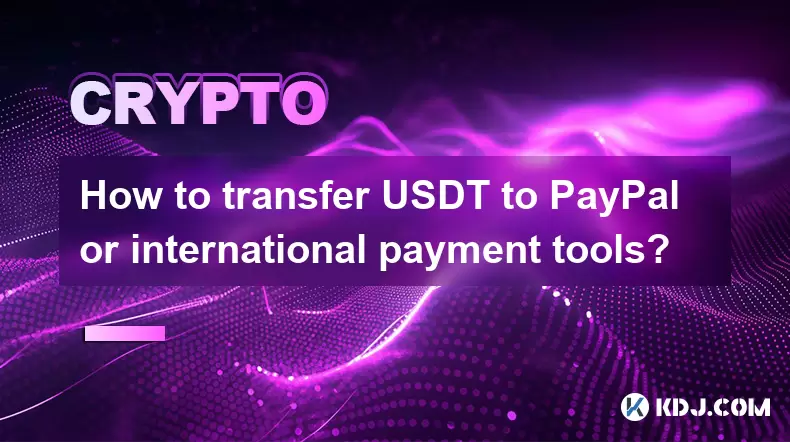
How to transfer USDT to PayPal or international payment tools?
Jun 15,2025 at 05:28am
Understanding the Basics of USDT and PayPal IntegrationUSDT (Tether) is a stablecoin pegged to the US dollar, offering blockchain-based value transfer...
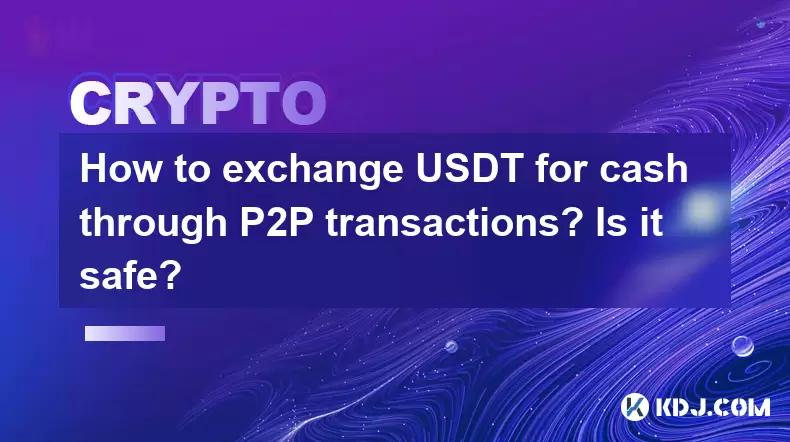
How to exchange USDT for cash through P2P transactions? Is it safe?
Jun 18,2025 at 07:56am
Understanding USDT and P2P TransactionsTether (USDT) is a stablecoin pegged to the value of the US dollar, making it a popular choice for users who wa...
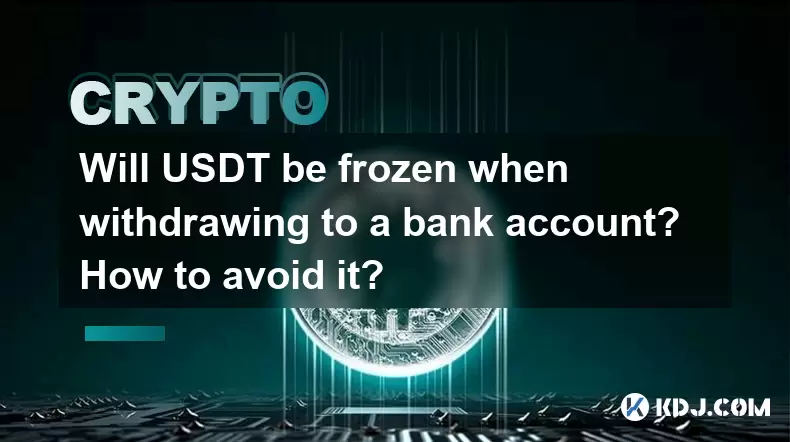
Will USDT be frozen when withdrawing to a bank account? How to avoid it?
Jun 15,2025 at 10:03am
Understanding USDT Withdrawals and Bank Account Freezing RisksWhen users decide to withdraw USDT (Tether) to a bank account, one of the most common co...
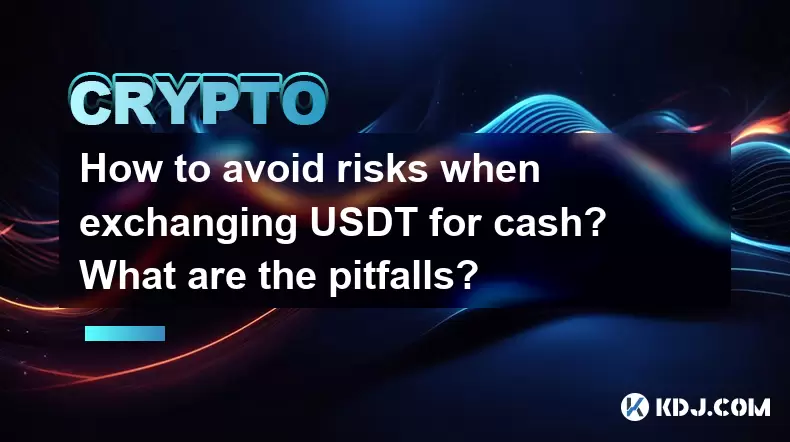
How to avoid risks when exchanging USDT for cash? What are the pitfalls?
Jun 11,2025 at 08:14pm
Understanding the Risks of Exchanging USDT for CashWhen exchanging USDT (Tether) for cash, users must be aware of the potential risks involved. As a s...

How to choose a reliable USDT exchange service provider? How to identify?
Jun 12,2025 at 03:15pm
Understanding the Role of USDT in Cryptocurrency TradingUSDT (Tether) is one of the most widely used stablecoins in the cryptocurrency market. It is d...

What is the most convenient way to cash out small amounts of USDT? Is there a shortcut?
Jun 11,2025 at 11:00pm
Understanding the Need to Cash Out Small USDT AmountsCashing out small amounts of USDT can be a challenge for many crypto users. Traditional methods o...

How to transfer USDT to PayPal or international payment tools?
Jun 15,2025 at 05:28am
Understanding the Basics of USDT and PayPal IntegrationUSDT (Tether) is a stablecoin pegged to the US dollar, offering blockchain-based value transfer...

How to exchange USDT for cash through P2P transactions? Is it safe?
Jun 18,2025 at 07:56am
Understanding USDT and P2P TransactionsTether (USDT) is a stablecoin pegged to the value of the US dollar, making it a popular choice for users who wa...

Will USDT be frozen when withdrawing to a bank account? How to avoid it?
Jun 15,2025 at 10:03am
Understanding USDT Withdrawals and Bank Account Freezing RisksWhen users decide to withdraw USDT (Tether) to a bank account, one of the most common co...

How to avoid risks when exchanging USDT for cash? What are the pitfalls?
Jun 11,2025 at 08:14pm
Understanding the Risks of Exchanging USDT for CashWhen exchanging USDT (Tether) for cash, users must be aware of the potential risks involved. As a s...
See all articles

























































































